On the north-south route, close to Ben Thuy bridge in Trung Do ward (Vinh, Nghe An), on Dung Quyet mountain, there is a weather radar station that people in the Natural Resources and Environment industry call “divine eyes”. These days, when storm season is approaching, the station sends out warning data about storms and floods 24/7.
Vinh Weather Radar Station is the property of the North Central Meteorological and Hydrological Station. The North Central region includes three provinces: Thanh Hoa, Nghe An and Ha Tinh.
This area has a complicated topography, with high mountains to the west, narrow plains and a long coastline. Director of the North Central Meteorological and Hydrological Station Nguyen Van Luong said that for the last 5 years, extreme weather phenomena had been getting more frequent, more local, and more unpredictable. Responding to this new challenge, the North Central Meteorological and Hydrological Station invested in many projects to improve weather forecasting, of which Vinh Weather Radar Station was a highlight.
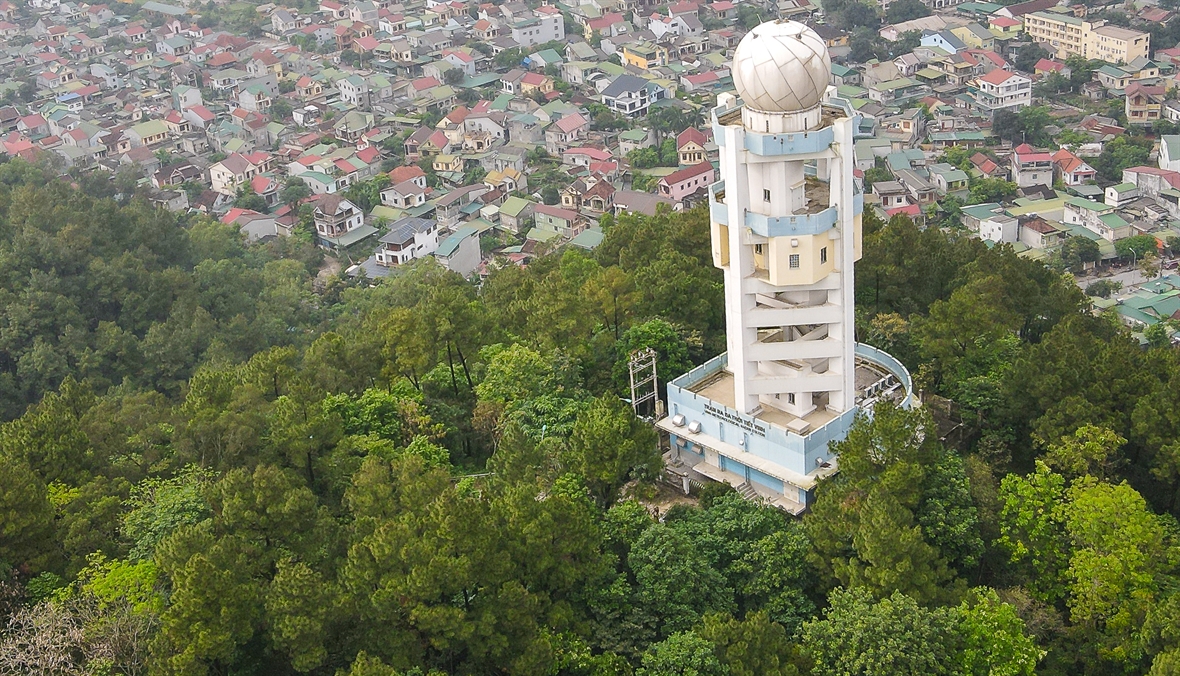 Vinh Weather Radar Station is a 37m high tower, located on Dung Quyet mountain. The circular sphere is the outer ring that protects the radar antenna. The station has 3 functional rooms including, the radar dome room, the radar equipment and components room and the monitoring and data analysis room. Photo: Nam Nguyen
Vinh Weather Radar Station is a 37m high tower, located on Dung Quyet mountain. The circular sphere is the outer ring that protects the radar antenna. The station has 3 functional rooms including, the radar dome room, the radar equipment and components room and the monitoring and data analysis room. Photo: Nam Nguyen
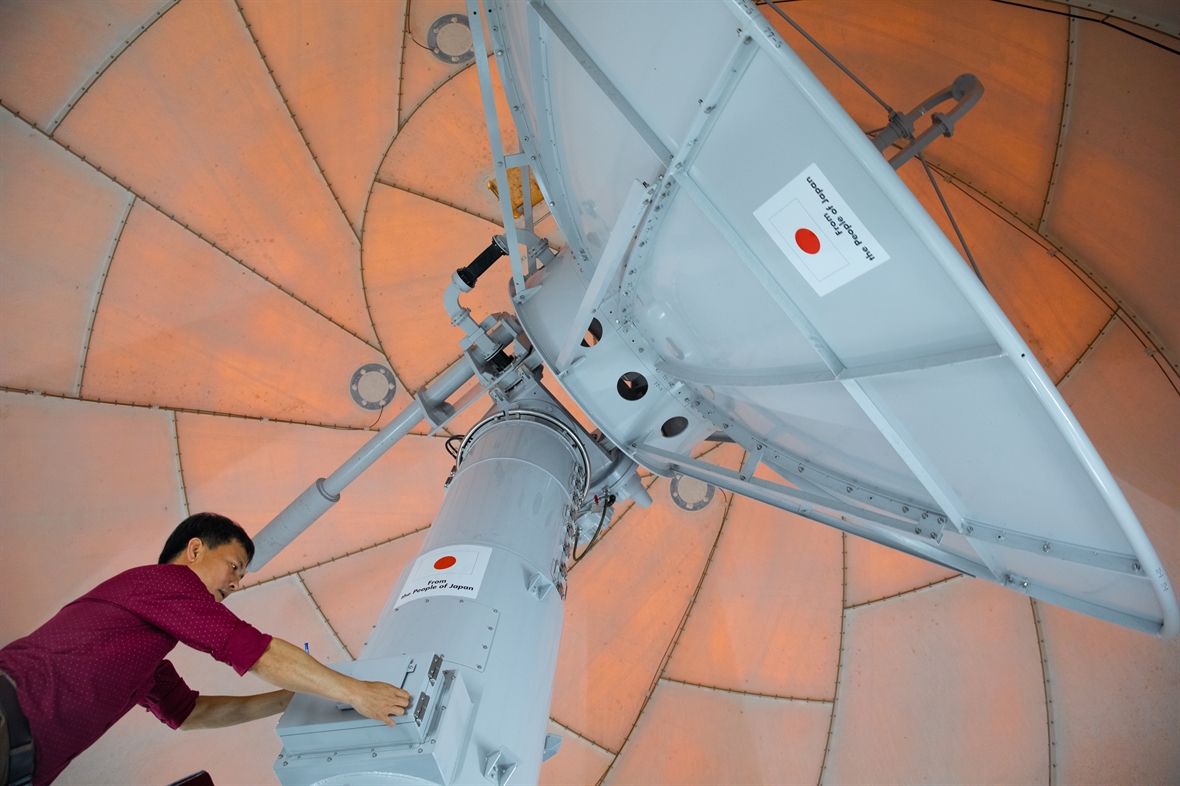 Ho Duy Son monitors the radar antenna. Photo: Yen Ninh
Ho Duy Son monitors the radar antenna. Photo: Yen Ninh
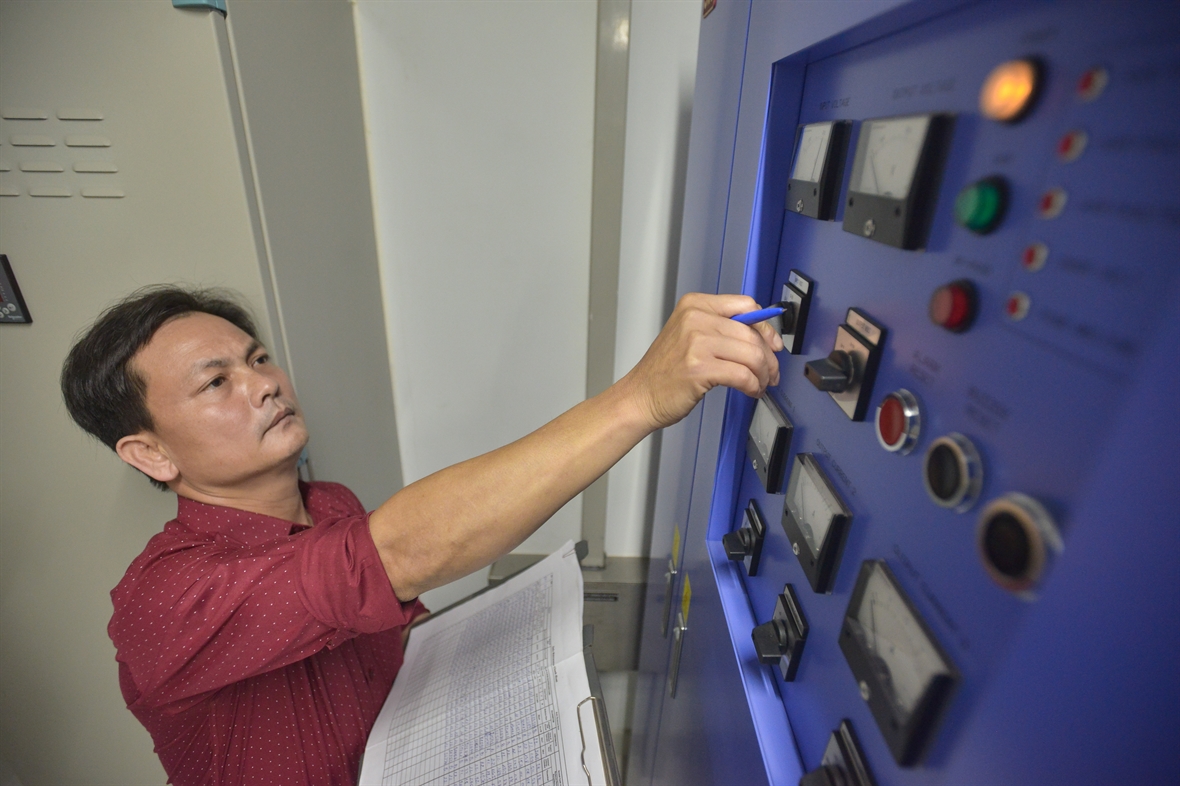
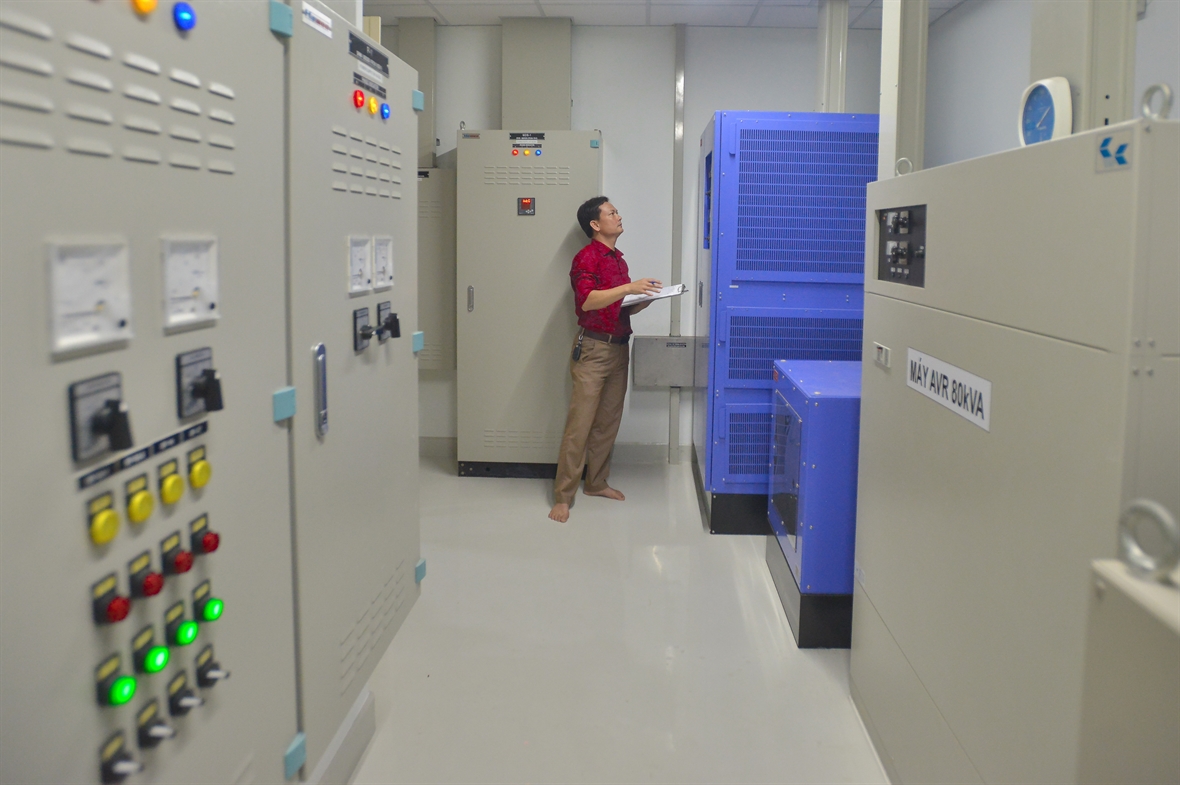 Ho Duy Son works in the radar equipment and components room. Photo: Yen Ninh
Ho Duy Son works in the radar equipment and components room. Photo: Yen Ninh
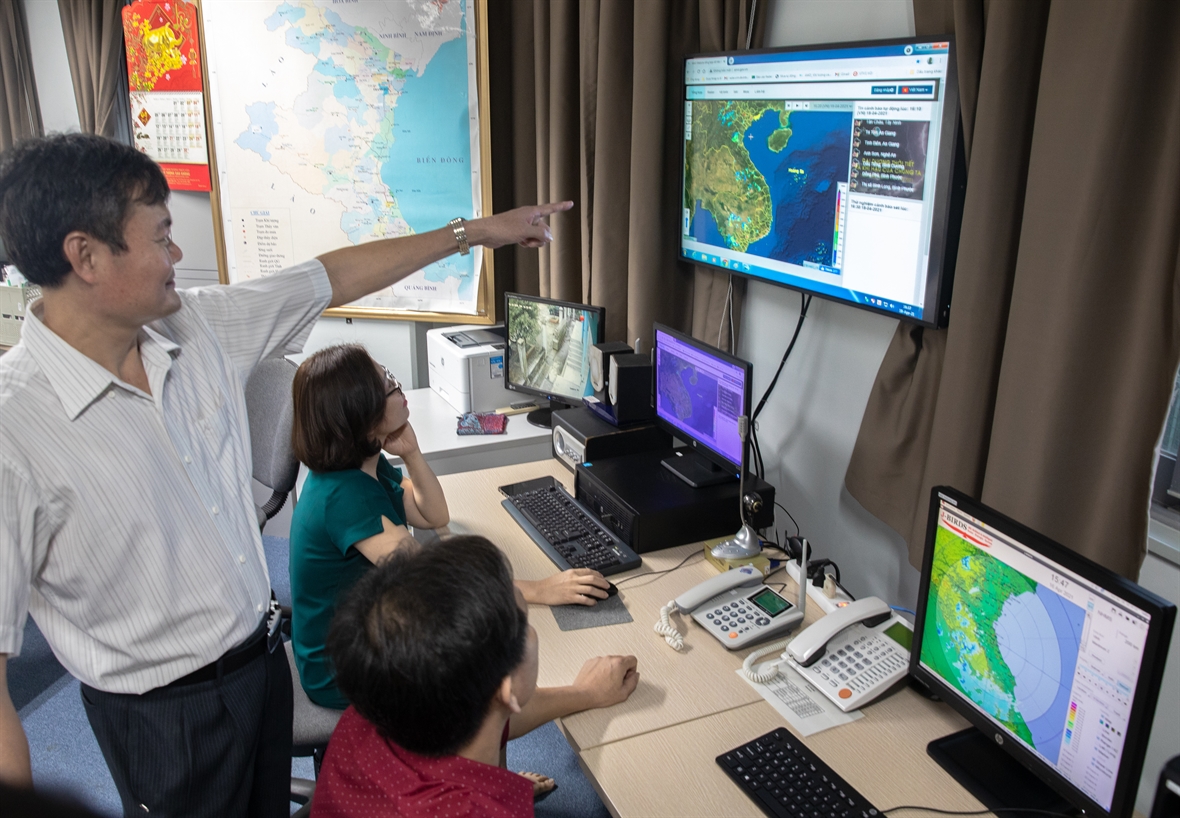
Le Duc Cuong, Deputy Director of the North Central Meteorological and Hydrological Station, monitors weather phenomena on a radar screen. Photo: Yen Ninh
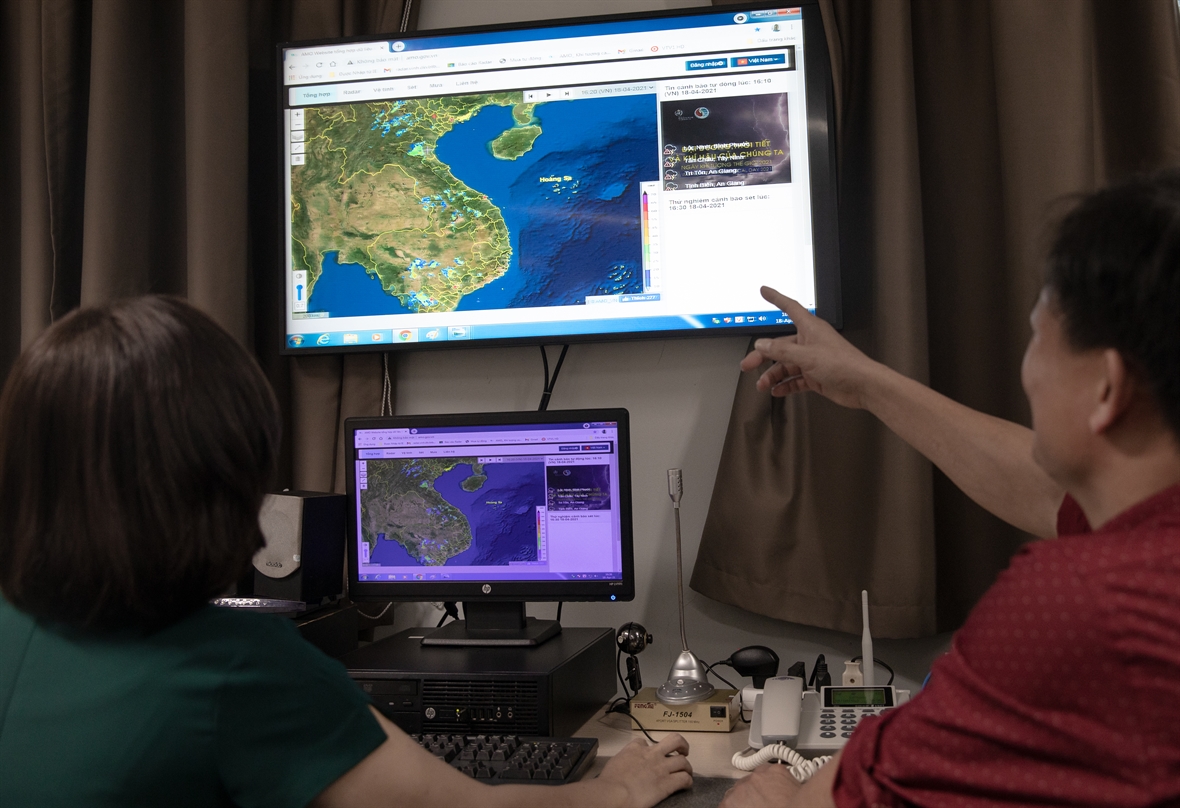 Cao Thi Hoang Lam and Ho Duy Son monitor the scanning area of the radar in the Data Analysis and Observation Department. Photo: Yen Ninh
Cao Thi Hoang Lam and Ho Duy Son monitor the scanning area of the radar in the Data Analysis and Observation Department. Photo: Yen Ninh
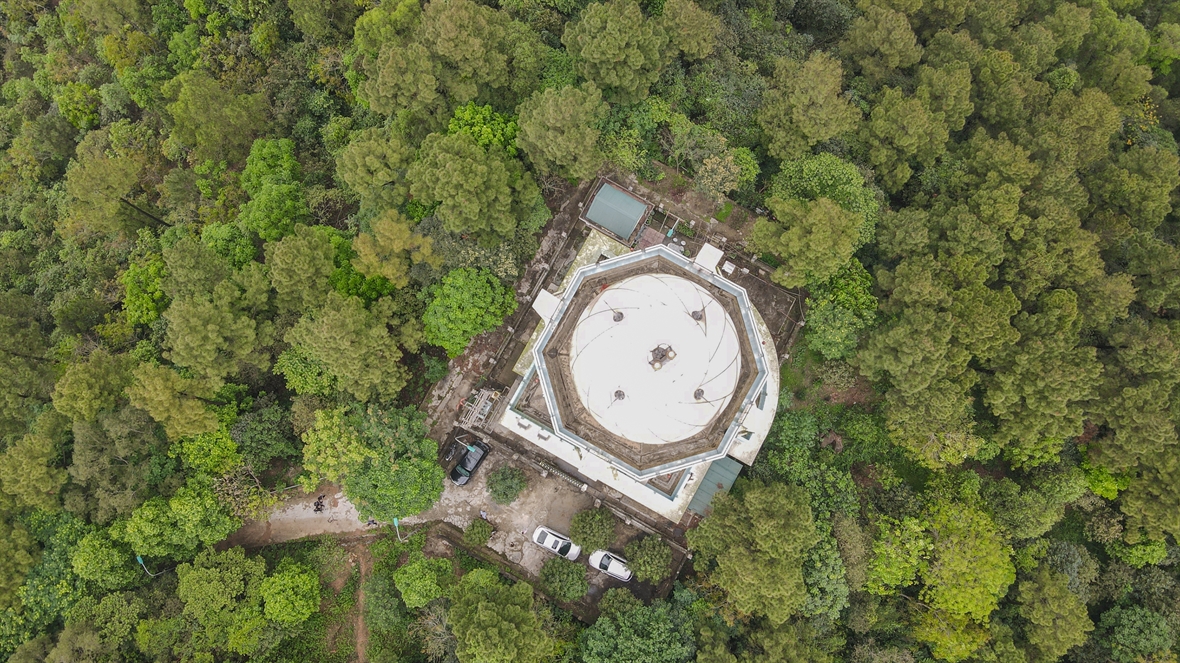
Vinh Weather Radar Station is one of the 4 most modern weather radar stations in Vietnam. Photo: Nam Nguyen
|
Mr. Trinh Duc Truong, Head of Vinh Weather Radar Station, provided the basic history of the station. In 1993, Vinh Weather Radar Station was established and equipped with an MRL-5 radar made by the Russian Federation. It was a gift from the Soviet Union on the 100th anniversary of President Ho Chi Minh's birthday. In 2008, the station stopped working due to a lack of replacement parts. In 2000, the station was retrofitted with the TRS - 2730 radar made by the French company Thomson. It was digitized radar and had some disadvantages.
|
In 2020, the North Central Meteorological and Hydrological Station forecasted and issued timely warnings for 14 storms, 1 tropical depression and 1 low-pressure area, of which 5 storms directly affected the region, 28 cold waves, in which 3 caused severe and harmful damage; 11 heat waves, in which 5 had large-scale effect; 23 thunderstorms, storms, whirlwinds, hail and 7 heavy rains on a large scale. Those forecasts minimized loss of life and property in the region. |
In 2017, as part of the project to strengthen the coping capacity of disasters caused by climate change (funded by non-refundable ODA of the Japanese Government), the station was rebuilt and new equipment was installed at the current location on Dung Quyet mountain. This radar can detect meteorological targets within a radius of up to 450km and detect wind speeds up to 200km/h. With Dung Quyet mountain at the center of the circle in the North Central region, this radar can check all weather conditions in the 3 provinces of Thanh Hoa, Nghe An and Ha Tinh.
According to Mr. Trinh Duc Truong, compared with conventional monitoring systems, the advantage of radar monitoring was its speed. Within a few minutes, it could obtain information about clouds and relevant weather in an area hundreds of kilometers wide. Weather radar was crucial for weather monitoring, especially monitoring over a large area, keeping an eye on medium-sized circulations like storms, tropical depressions and heavy rain.
Additionally, weather radar can do quick forecasting for a specific location in a small area. In forecasting storms and tropical depressions, the radar was crucial for identifying a storm’s center, as well as tracking a storm’s movement, direction and speed.
Recently, the “divine eye” Vinh Weather Radar Station “diagnosed” the Con Son storm as it was moving from the south of Luzon island (the Philippines) into the East Sea. The data that Vinh Weather Radar Station obtained was sent to the Department of Meteorology and Hydrology so that the department could issue timely and suitable warning, thus minimizing damage.
By Yen Ninh Translated by Hong Hanh